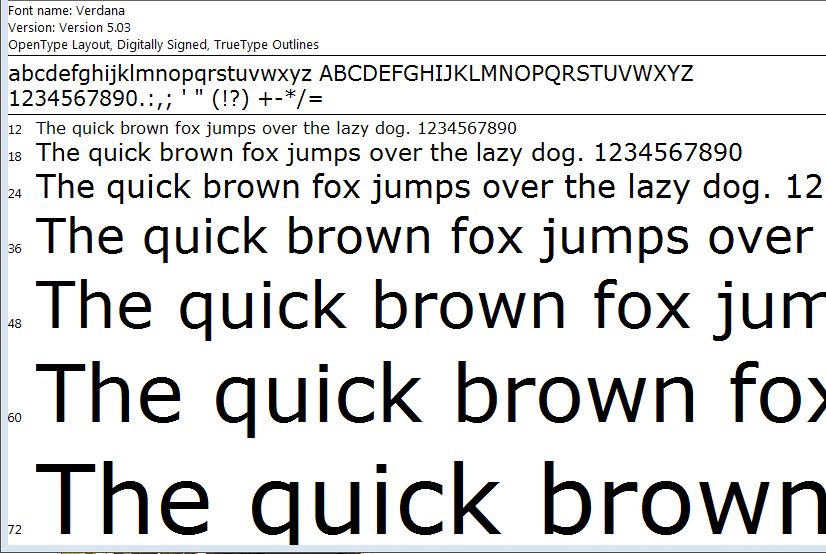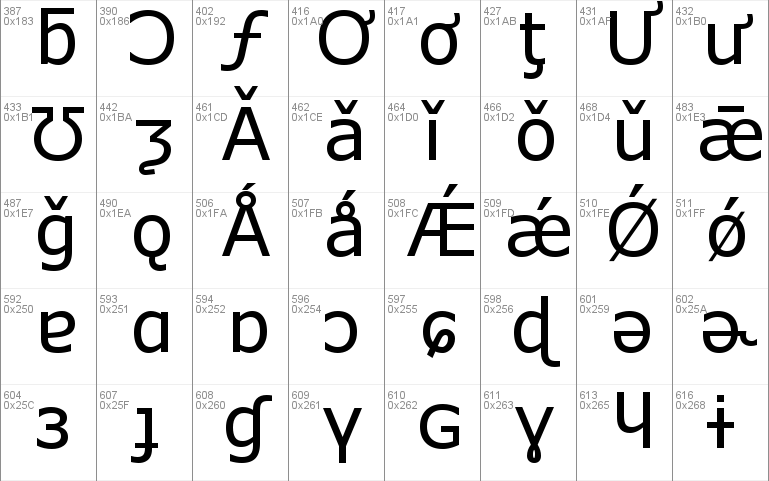

#VERDANA CYRILLIC FONT PC#
What’s not clear is the impetus that would lead to both of fonts being chosen for inclusion with Windows 95 and making their way into web and PC history. We’ve already discussed the various factors that contribute to legibility on a computer display, and it’s a fairly straightforward exercise to come up with individual features or characteristics of a display that would lead it to benefit in legibility by increasing the tracking 5 of the letters. While they start off nicely lined up at the s, the situation deteriorates significantly from there, until the l in Verdana’s sample is superimposed on top of the e from the Tahoma text. With the individual characters in the Verdana sample scaled down to 93% of their initial width, the only non-negligible difference between the two fonts is now their letter spacing: Verdana’s characters are spaced considerably farther apart than those of Tahoma. Here we can finally see clearly the biggest difference between these two typefaces.

Sample text in Tahoma (orange) superimposed atop a sample in Verdana (blue), the latter of which’s characters have been scaled down to 93% of their initial width. To illustrate just how similar these two fonts are, here’s the letter a as it appears in both, superimposed atop of one another: What’s curious is that these two are essentially the same font, just adjusted for on-screen legibility differently (or, perhaps more accurately, to a different extent). To that end, Matthew’s final package included both a serif font (none other than the beautiful Georgia) as well as the two sans serif fonts we are looking at today. The Microsoft-commissioned package of fonts was one of the first – if not the very first – attempts at creating fonts optimized for display rather than print addressing issues such as legibility, kerning, letter spacing, and more as affected by the nature of the medium displaying them and its salient characteristics, such as a low DPI, a different reading distance, zero literal ink bleed, and pixels formed of individual RGB subpixel components. The purpose of this commission was to create a package of fonts that could be used for a variety of purposes sharing a common theme: rendered/displayed on a computer screen rather than in print. Both Verdana and Tahoma were introduced in Windows 95, as part of the collection of fonts commissioned by Microsoft for “the new PC era,” and designed by the legendary Matthew Carter of Georgia 3 fame and then hinted to pixel perfection by Tom Rickner of Monotype. If we drop the size of the Verdana sample down to 10.5pt from the original 11, we get characters with approximately the same width as those in the Tahoma sample, making it clear that the variations in linewidth stem from a different reason:īefore we dig deeper into the differences between the two fonts, let’s take a step back and explore their origins and design motivations. Solely factoring in the width of the strokes in the Verdana font sample does not account for the extra word’s worth of x-spacing taken up by the second line. The differences don’t stop there, however. While it’s hard to point out any structural differences between the characters, this image actually gives us our first major hint as to the difference between these two popular fonts: the second sample is somewhat heavier, almost as if it were a “Tahoma Medium” rather than a different font altogether. Here are two lines of text, one in each of the two fonts in question:Īside from the appalling hinting obvious in the second line, 2 there are some uncanny likenesses between the two. 1 If any fonts ever deserved scrutiny and attention, it’s these two.

Yet, these are two of the most popular online fonts, and have aged significantly well considering they share corporate roots with Comic Sans and Arial. But ask them what’s the difference between Tahoma and Verdana, and you might just be surprised by the ensuing silence. Ask your favorite typophile about the difference between Arial and Helvetica, and you’re sure to regret it… unless you have a latent appreciation for the differences between font faces, the attention given to kerning and hinting, and more.


 0 kommentar(er)
0 kommentar(er)
